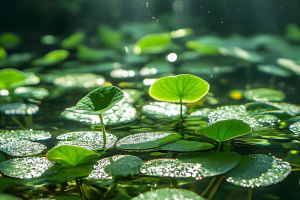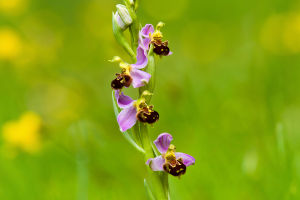Tropical rainforests are often called the "lungs of the Earth" because of their vital role in the planet's ecosystem. But have you ever stopped to think about what makes the plants in these forests so unique?
These plants face intense competition, extreme humidity, and constant rainfall, yet they have developed fascinating features to thrive in this environment.
This article will guide you through the remarkable characteristics of tropical rainforest plants and why they stand out in the plant kingdom.
Adaptation to High Rainfall: Managing Excess Water
One of the most striking features of tropical rainforest plants is their ability to handle heavy and frequent rainfall. Unlike plants in drier areas, these species have developed specialized leaves with drip tips. These pointed tips help water run off quickly, preventing fungal growth and leaf damage.
The leaves are often large and broad, maximizing sunlight absorption under the dense canopy, but their structure ensures they don't retain harmful moisture.
Competition for Light: Growing Up and Out
In the rainforest, sunlight is a precious commodity. Plants compete fiercely for access to light, which drives some incredible adaptations. Many plants grow tall and straight to reach the canopy, while others develop wide, flat leaves to capture sunlight filtering through the layers above.
Some species are climbers or epiphytes—they grow on other plants to access better light without investing energy in building a thick trunk. This competition has led to an extraordinary diversity of plant shapes and growth habits.
Efficient Nutrient Use: Surviving in Poor Soil
Despite the dense greenery, tropical rainforest soils are often low in nutrients. Plants have adapted by forming symbiotic relationships with fungi called mycorrhizae, which help roots absorb scarce minerals more efficiently. Others have shallow but widespread root systems to quickly absorb nutrients from decaying organic matter on the forest floor. Some plants recycle nutrients through rapid leaf turnover, dropping leaves that decompose quickly and feed the soil.
Defense Mechanisms: Protecting Against Herbivores
With so many animals living in the rainforest, plants need strong defenses. Many produce toxic chemicals or bitter compounds to deter herbivores. Some have thick, tough leaves or sharp thorns for physical protection.
Others use camouflage or mimicry to blend in or trick predators. These defense strategies ensure plants can survive and reproduce in a habitat teeming with potential threats.
Reproductive Strategies: Attracting Pollinators and Dispersers
Tropical rainforest plants exhibit diverse and specialized reproductive methods. Brightly colored flowers, strong scents, and nectar attract a wide range of pollinators, including birds, bats, and insects. Some plants have evolved to rely on specific animals, creating intricate ecological relationships.
Fruit often has fleshy, colorful coverings that attract animals, which then disperse seeds over wide areas. This mutual benefit helps maintain the rainforest's incredible biodiversity.
Unique Plant Types: Epiphytes and Carnivores
The rainforest is home to some extraordinary plant types not commonly found elsewhere. Epiphytes, such as orchids and bromeliads, grow on other plants without harming them, gaining access to light high in the canopy.
Carnivorous plants like pitcher plants have adapted to nutrient-poor environments by capturing and digesting insects, supplementing their diet with animal nutrients. These fascinating adaptations highlight the rainforest's ecological complexity.
Carbon Storage and Climate Impact
Rainforest plants play a crucial role in carbon storage, helping regulate the global climate. Through photosynthesis, they absorb large amounts of carbon dioxide, reducing greenhouse gases in the atmosphere.
This makes preserving rainforest plant life essential not only for biodiversity but also for climate stability. Scientists emphasize that protecting these plants benefits both local ecosystems and the entire planet.
Conclusion: The Marvel of Rainforest Plants
Tropical rainforest plants are truly nature's masterpieces. Their unique adaptations to high rainfall, intense competition, poor soil, and abundant threats make them stand out in the plant world.
By learning about these remarkable traits, we gain a deeper appreciation for the complexity and importance of rainforests. What rainforest plant surprises you the most? Feel free to share your thoughts and favorite facts!


